
The King's Royal Rifle Corps was an infantry rifle regiment of the British Army that was originally raised in British North America as the Royal American Regiment during the phase of the Seven Years' War in North America known in the United States as 'The French and Indian War.' Subsequently numbered the 60th Regiment of Foot, the regiment served for more than 200 years throughout the British Empire. In 1958, the regiment joined the Oxfordshire and Buckinghamshire Light Infantry and the Rifle Brigade in the Green Jackets Brigade and in 1966 the three regiments were formally amalgamated to become the Royal Green Jackets. The KRRC became the 2nd Battalion, Royal Green Jackets. On the disbandment of the 1st Battalion, Royal Green Jackets in 1992, the RGJ's KRRC battalion was redesignated as the 1st Battalion, Royal Green Jackets, eventually becoming 2nd Battalion, The Rifles in 2007.

The Post Office Rifles was a unit of the British Army formed in 1868 from volunteers as part of the Volunteer Force, which later became the Territorial Force. The unit evolved several times until 1935, after which the name was lost during one of many reorganisations.

The Rifle Brigade (The Prince Consort's Own) was an infantry rifle regiment of the British Army formed in January 1800 as the "Experimental Corps of Riflemen" to provide sharpshooters, scouts, and skirmishers. They were soon renamed the "Rifle Corps". In January 1803, they became an established regular regiment and were titled the 95th Regiment of Foot (Rifles). In 1816, at the end of the Napoleonic Wars, they were again renamed, this time as the "Rifle Brigade".
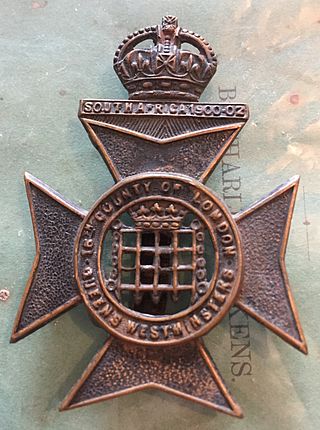
The Queen's Westminsters were an infantry regiment of the Territorial Army, part of the British Army. Originally formed from Rifle Volunteer Corps, which were established after a French invasion scare of 1859. The unit became part of the newly established London Regiment on the formation of the Territorial Force in 1908. It was subsequently amalgamated in 1921 with the Civil Service Rifles, and became a territorial Battalion of the King's Royal Rifle Corps in 1937. It ceased to exist as separate entity after it was amalgamated in 1961.
The Rifles is an infantry regiment of the British Army. Formed in 2007, it consists of four Regular battalions and three Reserve battalions. Each Regular battalion of The Rifles was formerly an individual battalion of one of the two large regiments of the Light Division. Since formation the regiment has been involved in combat operations, first in the later stages of the Iraq War and in the War in Afghanistan.

A rifleman is an infantry soldier armed with a rifled long gun. Although the rifleman role had its origin with 16th century hand cannoneers and 17th century musketeers, the term originated in the 18th century with the introduction of the rifled musket. By the mid-19th century, entire regiments of riflemen were formed and became the mainstay of all standard infantry, and rifleman became a generic term for any common infantryman.
The 167th Brigade was an infantry formation of the British Territorial Army that saw active service in both the First and Second World Wars. It was the first Territorial formation to go overseas in 1914, garrisoned Malta, and then served with the 56th (London) Infantry Division on the Western Front. In the Second World War, it fought in the North African and Italian campaigns in the Second World War.

A rifle regiment is a military unit consisting of a regiment of infantry troops armed with rifles and known as riflemen. While all infantry units in modern armies are typically armed with rifled weapons the term is still used to denote regiments that follow the distinct traditions that differentiated them from other infantry units.
The 131st Infantry Brigade, originally the Surrey Brigade was an infantry formation of Britain's Territorial Army that saw service during both the First and the Second World Wars. In the First World War the brigade was in British India for most of the war and did not see service as a complete unit but many of its battalions would see service in the Middle East.
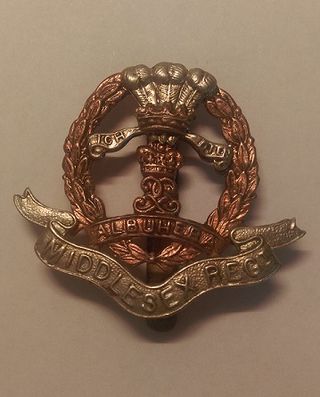
The Middlesex Regiment (Duke of Cambridge's Own) was a line infantry regiment of the British Army in existence from 1881 until 1966. The regiment was formed, as the Duke of Cambridge's Own (Middlesex Regiment), in 1881 as part of the Childers Reforms when the 57th (West Middlesex) and 77th (East Middlesex) Regiments of Foot were amalgamated with the county's militia and rifle volunteer units.
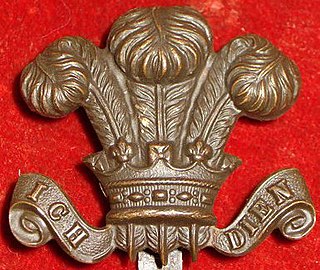
The Prince of Wales' Own Civil Service Rifles was an infantry regiment of the Volunteer Force and Territorial Force of the British Army from 1798 to 1921; it saw active service in the Boer War and World War I as part of the London Regiment.
The 168th Brigade was an infantry brigade formation of the British Army that saw service during both the First and the Second World Wars. Throughout its existence, serving under many different titles and designations, the brigade was an integral part of the 56th (London) Infantry Division. It served on the Western Front during First World War and in the Italian Campaign during the Second World War. It was finally disbanded in the 1960s.

The 140th Brigade was an infantry brigade formation of the British Army's Territorial Army (TA) that had its origins in a South London Brigade of the former Volunteer Force. It served on the Western Front in the First World War and was recreated during the Second World War where it served only in the United Kingdom as a training formation.
The 169th Brigade was an infantry brigade of the British Army that saw active service in both the First and the Second World Wars. Throughout its existence the brigade, serving under numerous many different titles and designations, was an integral part of the 56th (London) Infantry Division. It served on the Western Front in the First World War, and in the North African and Italian campaigns during the Second World War.
The Paddington Rifles was a unit of the Territorial Army.
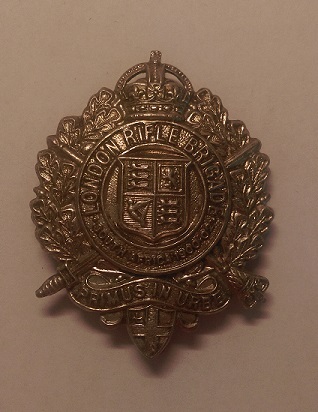
The London Rifle Brigade was a volunteer regiment of the British Army.

The Rangers was a volunteer unit of the British Army, originally formed in 1860. It provided a detachment for service in the Second Boer War, saw intensive action on the Western Front in the First World War, and served as motorised infantry during the Second World War during the campaigns in Greece and the Western Desert.
The St Giles's and St George's Bloomsbury Rifle Volunteer Corps, more familiarly known as the Bloomsbury Rifles, was a Volunteer unit of the British Army in London from 1803 to 1814 and from 1860 until 1908.
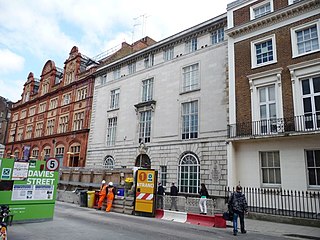
The Davies Street drill hall is a former military installation in Davies Street, London.
The 24th Battalion, London Regiment was an auxiliary unit of the British Army. Formed in 1908 from Volunteer units in the Surrey suburbs of London that dated back to 1860, it was part of the London Regiment in the Territorial Force (TF). Its battalions served on the Western Front at Salonika and in Palestine during World War I. When the London Regiment was abolished the unit reverted to the Queen's Royal Regiment and served in the Battle of France, in North Africa, including the Battle of Alamein, and in taly and North West Europe as part of the 7th Armoured Division. Postwar it was converted to an anti-aircraft regiment of the Royal Artillery.















